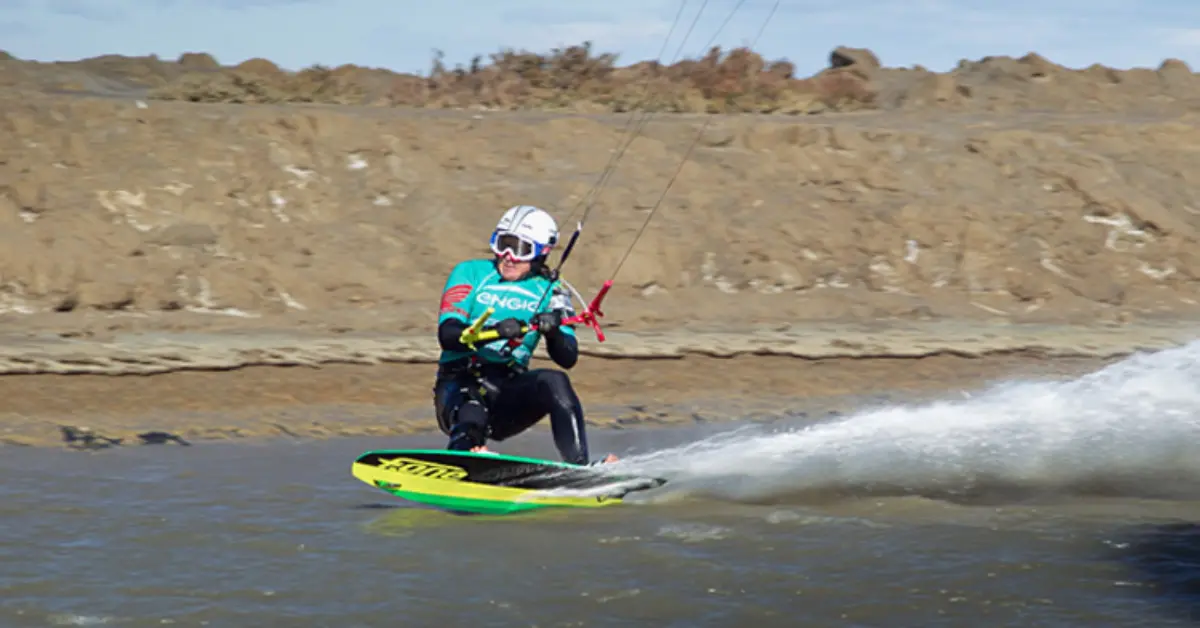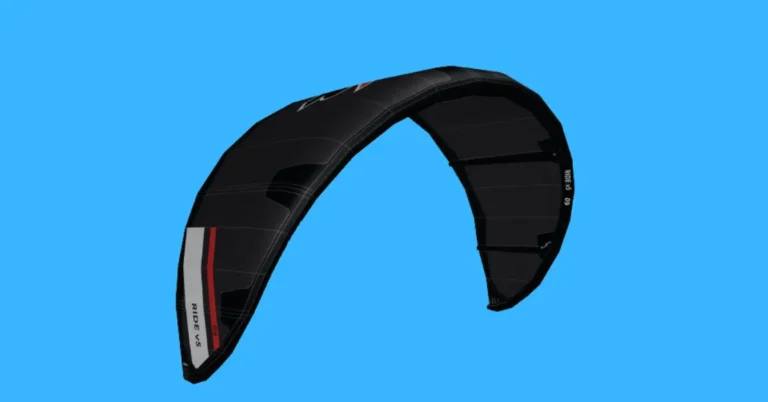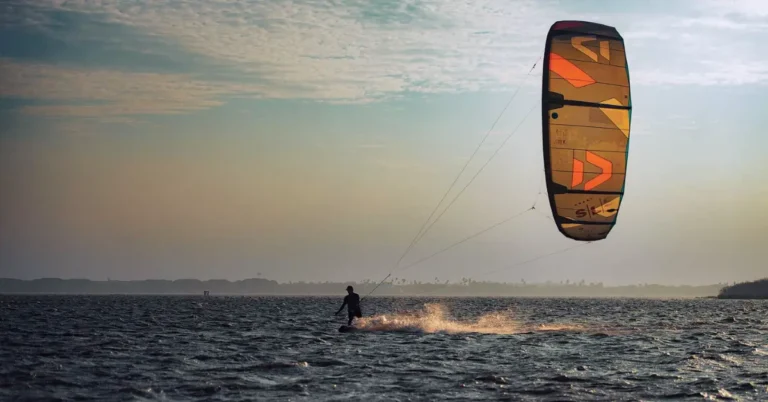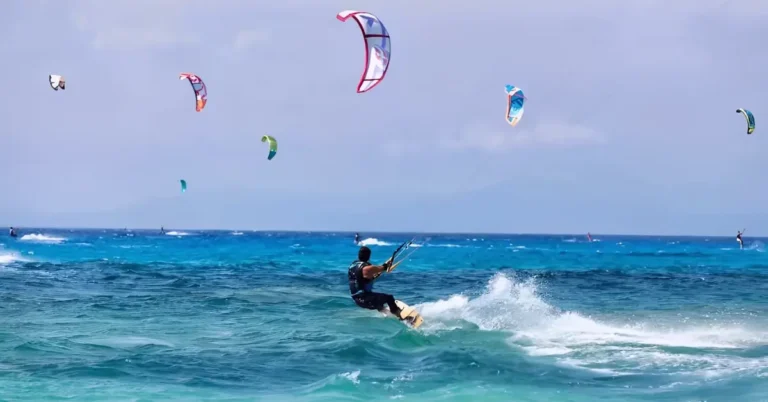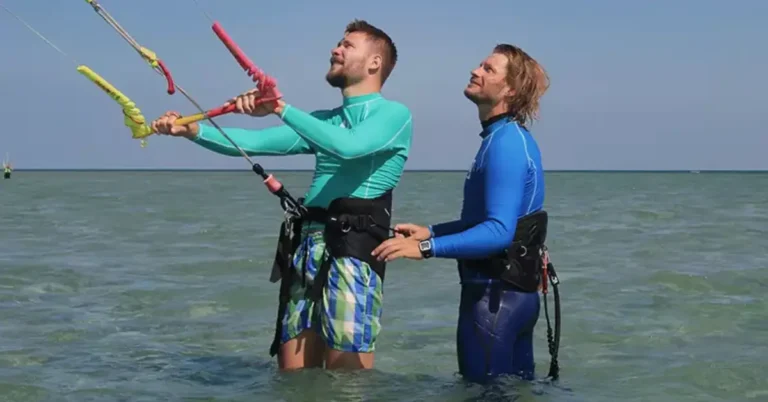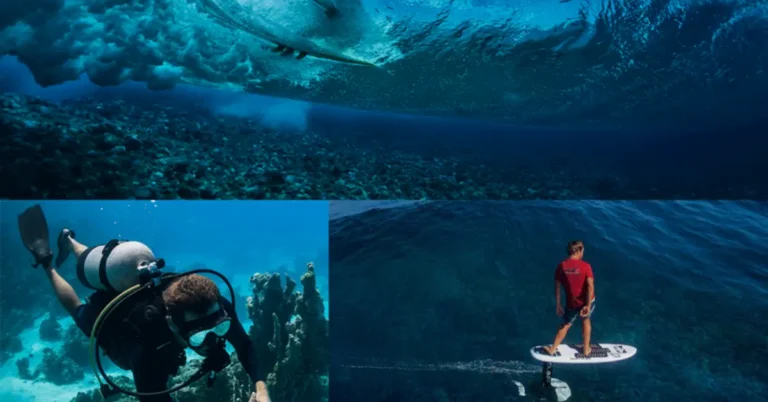How Fast Do Kitesurfers Go?
When you’re out kitesurfing, your speed can vary depending on factors like wind strength, water conditions, and your equipment. Generally, most kiteboarders go between 15 to 25 miles per hour (mph).
If conditions are ideal and you’re skilled with the right gear, you might hit speeds around 40mph. Professional racers can zoom even faster, reaching up to nearly 60mph.
A few things affect your speed: wind, water surface, the size and type of kite you use, your weight, and how you handle the kite and board. Keep in mind that going super fast might sacrifice some comfort and safety.
Also Read: 11 Best Places in the World to Kitesurf
How Fast Can You Ride when Kitesurfing?
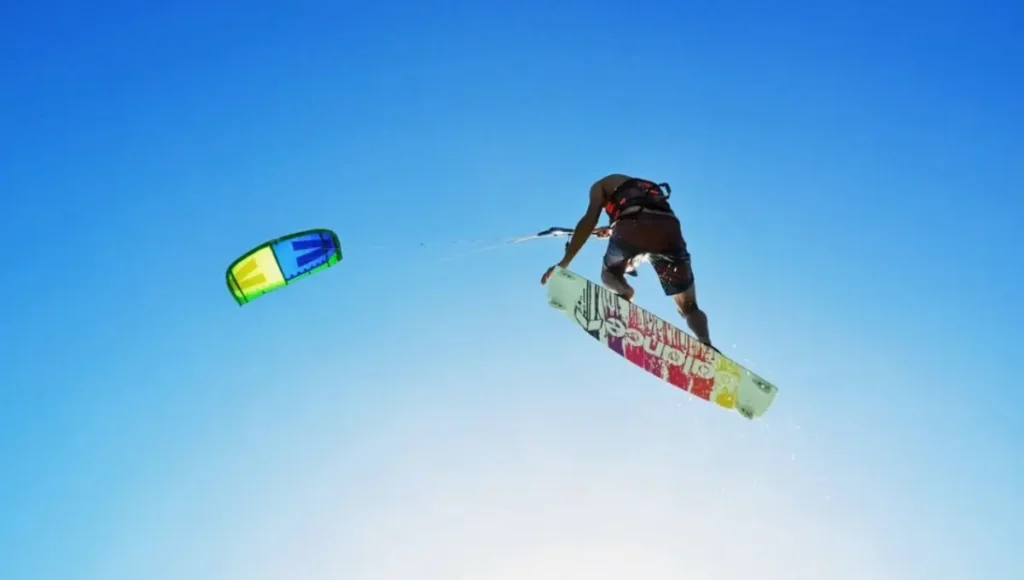
Here are some real-life examples of kitesurfing speeds measured by different riders using GPS trackers like the Woo:
Kitesurfing at up to 30mph usually feels natural and safe in strong, steady winds and on very smooth, shallow water. However, in choppy or rough water, you might feel like you’re going too fast and could risk injury if you fall, even though the choppy water slows you down. Most riders feel comfortable at 15-20mph speeds in average water conditions.
Factors that Influence Kitesurfing Speed
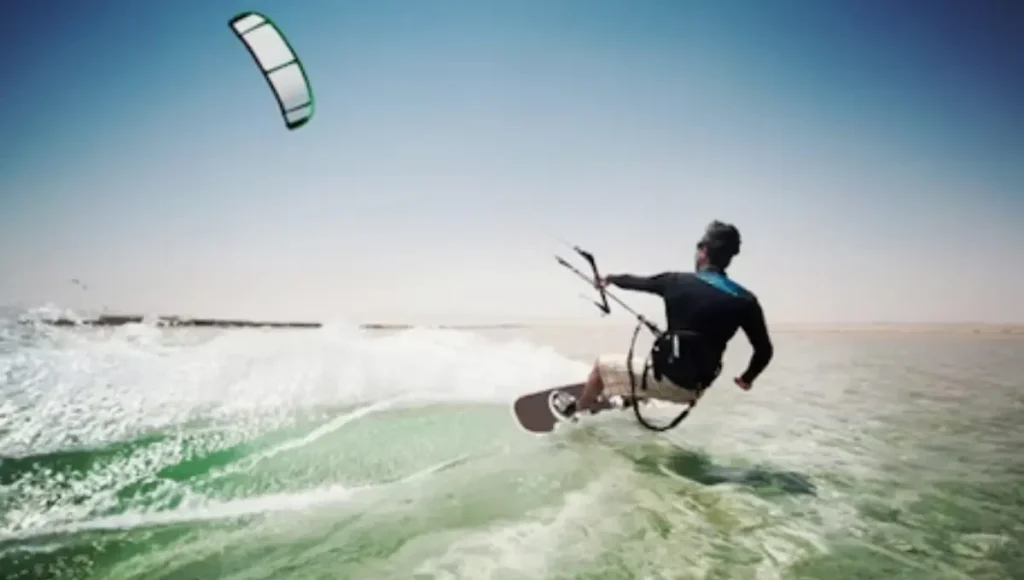
Stronger winds allow kitesurfers to go faster, especially on flat water. Kitesurfers can exceed wind speed because of “apparent wind,” which includes the extra wind created by the movement of the board.
A regular rider can go much faster than the actual wind speed, sometimes doubling it. For instance, in 18-knot winds, a rider can effortlessly reach speeds of at least 20 knots (23mph), and even faster under optimal conditions.
Factors affecting maximum speed include:
How do Kitesurfers Build up and Control Speed?
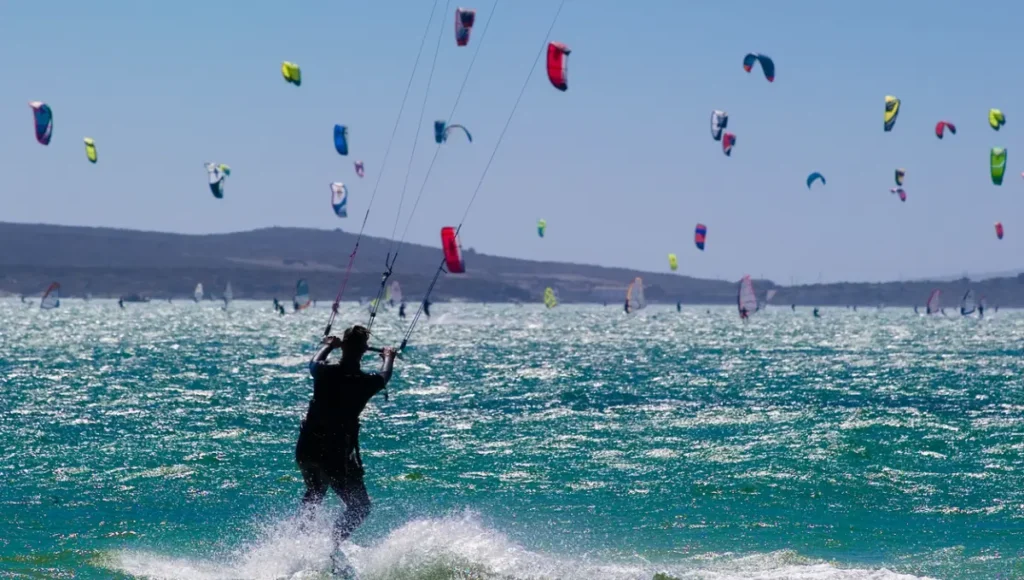
In flat water, reaching high speeds means finding the right angle to the wind, typically around 110 degrees. This minimizes friction by reducing how much your board digs into the water.
However, going completely downwind and flattening your board too much can slacken your lines, reducing kite power and speed. So, it’s about finding a balance. To hit top speed, the angle of your board to the wind, and how much you edge, depends on your board’s shape. Different boards build up speed differently when ridden flat and under different kite traction.
Controlling speed is crucial, especially for less experienced riders. This involves edging upwind hard while raising your kite to reduce its pull. In strong winds, your body position is key to slowing down. You’ll need to turn your shoulders, hips, and knees into the wind while lifting your kite upward.
How Fast Kitesurfers Go – Board Top Speeds
Here are the top speeds that different kitesurfing boards can reach in simple table form:
| Board Type | Top Speed |
| Twin Tip | Around 38 mph |
| Surfboard | Around 38 mph |
| Hydrofoil | Around 45 mph |
| Race Board | Around 55 mph |
| Speed Board | Around 67 mph |
Do Windsurfers or Kitesurfers Go Faster?
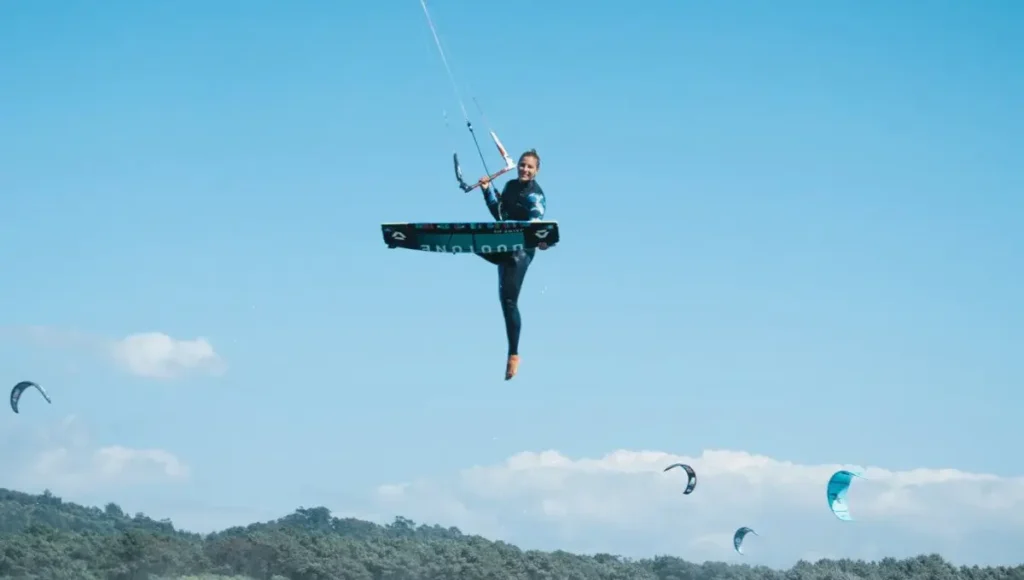
This question is often asked by both experienced and new kiters. Races between kitesurfers and windsurfers are rare because the two sports have different ideal conditions for riding. Safety concerns, like the risk of tangling lines with windsurfing masts, also keep them apart.
Kitesurfers and windsurfers ride at different angles to the wind, making it difficult to organize races between them. Windsurfers usually ride at maximum speed, while kitesurfers often ride slower, especially in strong winds.
Kitesurfers typically only go downwind for specific reasons like riding waves, doing jumps, or enjoying a downwinder with transportation arranged for the return trip. Many kitesurfers avoid high speeds because it become harder to control and slow down, especially when overpowered.
Frequently Asked Questions
Conclusion
Kitesurfers can reach impressive speeds, often exceeding the speed of the wind itself. While the average rider may cruise between 15-25 mph, skilled kitesurfers can double the wind speed, hitting around 40 mph under optimal conditions. Professional racers push boundaries, reaching speeds of 50-60 mph.
Achieving maximum speed depends on factors like wind strength, water conditions, equipment, and riding technique. While high speeds offer exhilaration, control, and safety remain paramount. Kitesurfing’s diverse appeal, from leisurely cruising to adrenaline-fueled racing, showcases its dynamic nature, attracting enthusiasts seeking both thrill and mastery of the sport.
